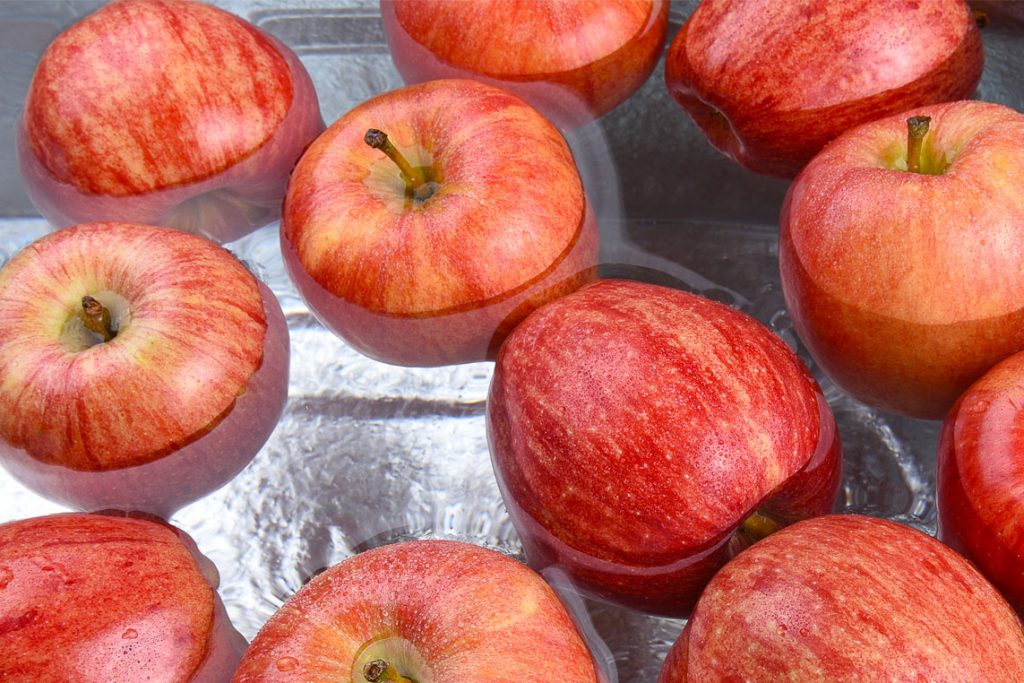All of the good holidays have traditions that we can look forward to. Whether it’s fireworks on the Fourth of July or turkey on Thanksgiving, every tradition has to start somewhere, and as it turns out, even Halloween’s bobbing for apples has a history.
This year, as you plunge your head into a cold bucket of water in attempt to bite through the flesh of an apple, consider that the origins of this bizarre tradition are nearly 2,000 years old.
Apples were once considered a symbol of love.
In Scotland, the legend goes, a maiden would sit alone in a room and eat an apple in front of a mirror, whereupon the face of her husband would appear.
In Montenegro, if a bride successfully threw an apple on the roof of her husband’s house, their union, it is said, would be blessed with children.
In Greek mythology, Paris was tasked with choosing which god should receive an apple inscribed “most beautiful”: Hera, Athena, or Aphrodite. Each tried to bribe Paris, but it was Aphrodite’s promise of Helen of Sparta (who was already married to King Menelaus) that won the golden apple, thereby sparking the Trojan war. Apples were also depicted as being favored by Venus, the goddess of love.
So it’s not a stretch that the concept of “bobbing for apples” started out as a type of European dating game.
According to History.com, the game began as a British courting ritual, popular among young ladies and their potential suitors. Each apple was assigned to a young man. If the girl successfully snatched an apple from the water on her first try, their love would go the distance. If it took her a second try, they would court, but it wouldn’t last. Need for a third attempt meant their relationship was doomed.
Another variation of the game made it more competitive. Be the first to bite and surface with an apple, and you would be the first to marry.

Somewhere throughout the centuries, these dating games had become associated with Halloween thanks to the Celtic festival Samhain (pronounced sow-in), which marked the end of the harvest and the beginning of winter. It honored the Roman goddess of fruit, Pomona — who was represented by an apple, so you can see where the connection to this game might be. (Fun fact: the study of apples/fruit is called ‘pomology’.) According to NPR, Celts created huge bonfires, wore costumes, and made animal sacrifices to the gods in hopes the sun deity would return the following year and bring another year of life and another season of bountiful harvest. It was also the one night a year when spirits were said to be allowed to walk amongst the living.
After conquering lands, the Romans (then the Christian Church) often took holidays and overlaid their own celebrations, but many customs remain the same. Bobbing for apples wasn’t originally part of Samhain, but after the Roman invasion, customs and traditions blended.
The game declined in popularity over the centuries, and by the 1800s was stricken only to areas of Ireland and certain parts of England.
Apple trees had arrived in North America with the European colonists. Prior to that, only crabapples grew on the western continent. By the 19th century, Americans exploring their cultural heritage, decided to bring back the Celtic fall tradition as a party game for children and adults of all ages.
Bobbing for apples in now popular all over the world. In fact, the Guinness World Record for most apples bobbed in one minute is 37 — achieved by Cherry Yoshitake of Japan in October 2015.
Also see, 25 fun facts you never knew about apples.




